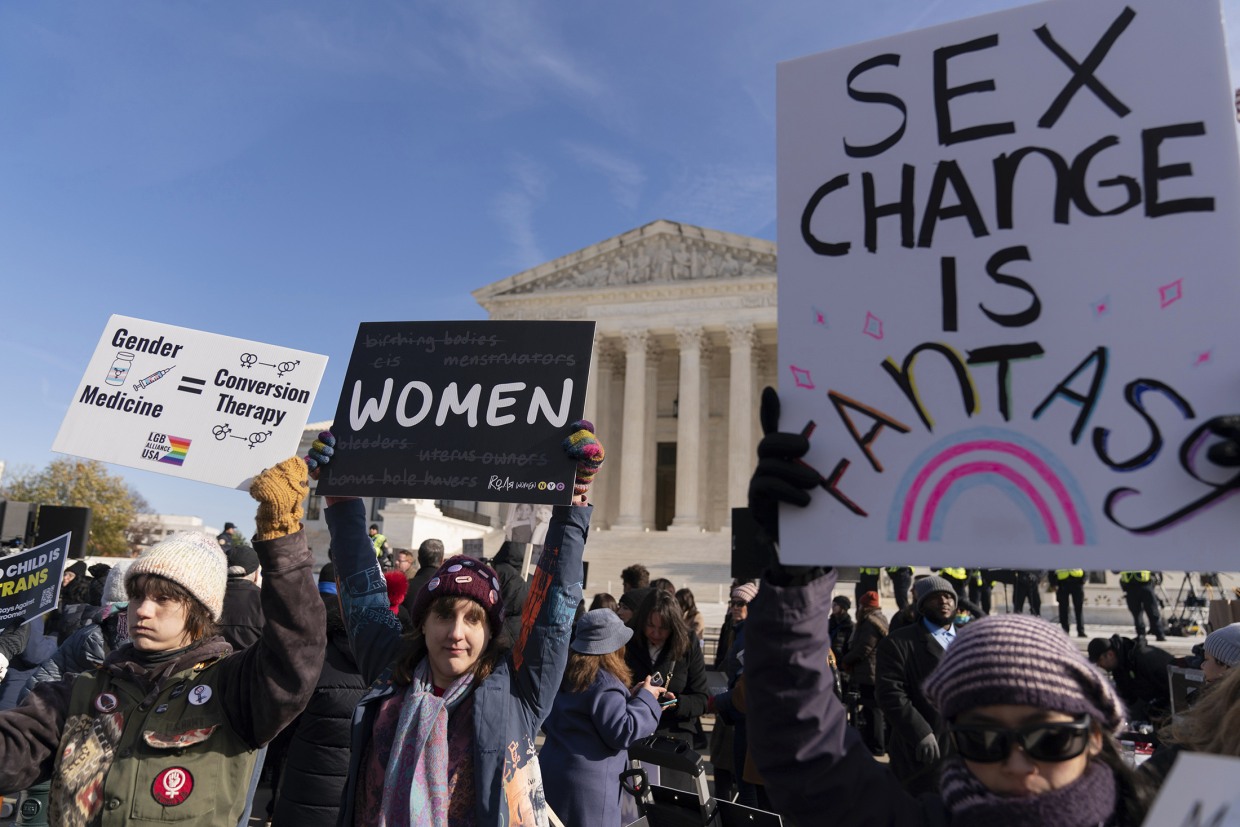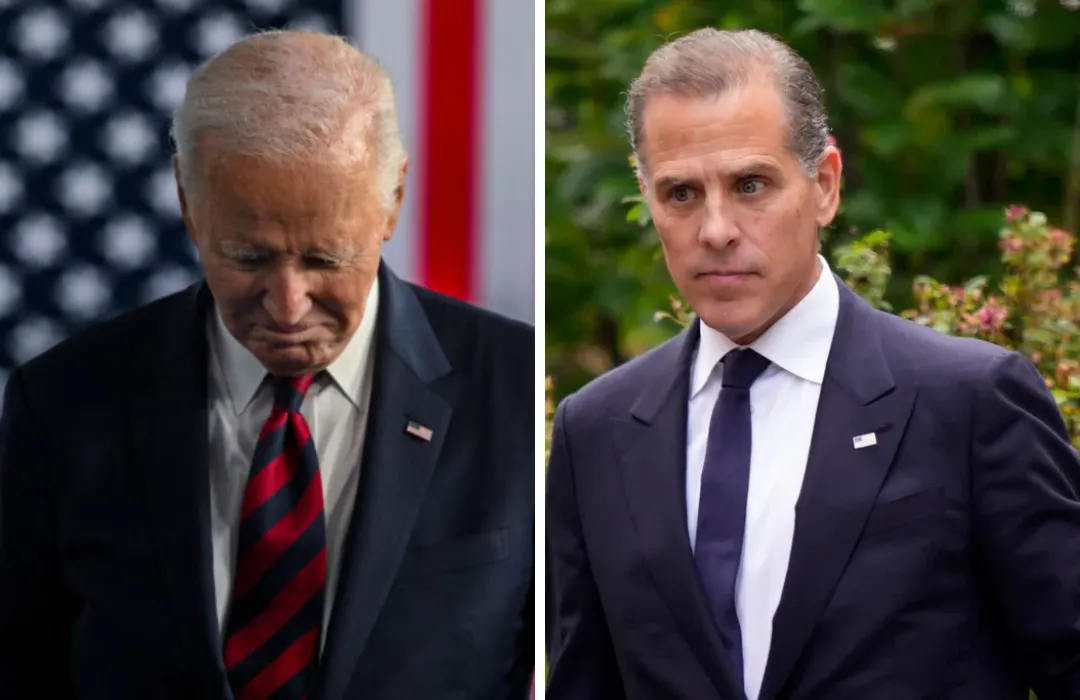As of 3:48 PM on Wednesday, June 25, 2025, reports from NBC News have highlighted a significant and growing trend: transgender individuals are leaving the United States in record numbers, a phenomenon attributed to the policies and rhetoric of President Donald Trump’s second administration.
This exodus, which began intensifying following Trump’s inauguration on January 20, 2025, reflects deep-seated fears within the transgender community regarding a series of executive orders targeting their rights.
This article examines the scope of this migration, the policies driving it, the personal stories behind the departures, and the broader implications for American society and its international reputation.
The surge in transgender emigration gained prominence after Trump’s reelection in November 2024, marked by a campaign that prominently featured anti-transgender rhetoric.
NBC News reported that many transgender individuals are not merely contemplating departure but are actively relocating, citing concerns over healthcare access, legal recognition, and personal safety.
Estimates suggest that organizations like Rainbow Railroad received over 1,100 requests for assistance from transgender Americans on the day following the election, a figure surpassing previous records even during global crises like the Afghanistan evacuation in 2021.
This data, while indicative of widespread anxiety, lacks comprehensive official corroboration, making the exact scale of the exodus difficult to quantify.
Trump’s administration has implemented several measures contributing to this trend. On his first day in office, he signed an executive order declaring that the federal government recognizes only two unchangeable sexes, male and female, effectively challenging the validity of gender identity.

Subsequent orders have banned transgender individuals from military service, restricted gender-affirming care for those under 19, and prohibited transgender women from participating in women’s sports.
The State Department’s suspension of passport applications allowing gender markers different from birth sex has further complicated travel and identity documentation, pushing individuals like Alexia Nunez to seek asylum in Canada.
These policies, framed by the administration as protecting traditional values, have been met with legal challenges from groups like the American Civil Liberties Union, yet their immediate impact has fueled a sense of urgency among transgender citizens.
Personal narratives underscore the human cost of these developments. G.R., a transgender man from California, relocated to New Zealand six months ago, citing a newfound sense of safety that allowed him to discontinue years of antidepressant use.
Similarly, H.R., a trauma therapist, moved her family abroad after her seven-year-old daughter came out as transgender, fearing escalating state-level restrictions on gender-affirming care.
These stories, amplified by NBC’s coverage, illustrate a pattern of preemptive flight, with individuals saving money, securing travel documents, and exploring asylum options.
The emotional toll is evident, as some, like K.D., grapple with the moral dilemma of leaving others behind, questioning whether such a move aligns with their values.
The policy environment extends beyond federal actions, with Republican-led states enacting complementary measures. Over 500 anti-transgender bills were introduced in state legislatures in 2023, a trend that has accelerated under Trump’s renewed leadership.

These include bathroom bans, restrictions on sports participation, and penalties for educators supporting gender-nonconforming students. The Supreme Court’s recent decision to uphold a Tennessee ban on gender-affirming care for minors has emboldened this legislative push, creating a patchwork of hostile environments that vary by region.
For transgender individuals, the cumulative effect is a nation where safety and acceptance appear increasingly elusive, prompting consideration of international relocation.
Economic and security concerns amplify the crisis. The fentanyl epidemic, with over 70,000 overdose deaths in 2024, has been loosely linked to border security issues, a topic Trump has leveraged to justify broader immigration crackdowns.
While transgender individuals are not the policy’s explicit target, the administration’s focus on national security has fostered a climate of exclusion that indirectly affects them.
Reports of increased violence against LGBTQ+ communities, as noted by the Department of Homeland Security in 2023, further heighten fears, with some attributing this to the administration’s rhetoric.
The lack of precise data on transgender-specific violence complicates the narrative, yet the perception of risk drives migration decisions.
International responses reveal a mixed reception. Canada and New Zealand have seen increased inquiries from American transgender individuals, with immigration lawyers reporting a spike in asylum requests since January 2025.
Canada’s Safe Third Country Agreement poses barriers, as seen in the overturned asylum case of Daria Bloodworth, yet some enter on tourist visas with hopes of extending their stay.

European nations, while not primary destinations, are also monitoring the situation, with human rights organizations criticizing the U.S. for reversing decades of progress on gender equality.
This global scrutiny challenges America’s moral authority, particularly as it navigates alliances with countries that uphold broader human rights standards.
The domestic political landscape shapes the context further. Trump’s approval rating on transgender issues hovers around 50 percent, according to an Associated Press-NORC poll conducted in May 2025, reflecting a polarized public.
While a majority oppose government-funded gender-affirming care for youth, support for transgender military service remains stronger, suggesting a nuanced divide.
Progressive voices decry the exodus as a failure of leadership, arguing that it reflects a loss of talent and diversity. Conservative supporters, conversely, view the policies as a restoration of traditional norms, dismissing emigration as an overreaction. This divide mirrors the broader cultural war, with media coverage amplifying both sides.
Critics of the establishment narrative question the media’s role in framing this exodus. NBC’s focus on record numbers may exaggerate the trend, given the lack of official statistics and the reliance on anecdotal evidence from advocacy groups.
The transgender population, estimated at 1.3 percent of U.S. adults per Gallup, represents a small fraction, and not all face identical risks. Some remain, organizing self-defense classes or advocating locally, as seen with activists like Bennett Kaspar-Williams in Los Angeles.
This resilience suggests that while fear drives some to leave, others are adapting within the U.S., challenging the notion of a uniform flight.

The economic impact of this migration warrants consideration. Transgender individuals contribute to the workforce, with many in healthcare, education, and creative industries.
Their departure could exacerbate labor shortages, particularly in progressive states like California and New York, where relocation rates are highest. Businesses supporting gender diversity may face reputational risks, while rural areas with fewer resources to absorb change might see minimal effects.
The long-term economic cost remains speculative, yet the loss of human capital poses a potential challenge to national competitiveness.
Legal battles offer a counterpoint to the migration trend. The ACLU’s lawsuit against the passport policy, filed on behalf of seven plaintiffs, seeks to restore identity recognition, with arguments centered on constitutional rights.
Federal courts have issued temporary injunctions, such as blocking the prison system’s enforcement of sex-assigned-at-birth housing, indicating judicial resistance.
These efforts suggest that the policy landscape may evolve, potentially reducing the pressure to emigrate. However, the slow pace of litigation leaves many in limbo, sustaining the current wave of departures.
The psychological dimension cannot be overlooked. The Trevor Project reported a 700 percent increase in crisis contacts from LGBTQ+ youth in the 24 hours post-election, with over 40 percent identifying as transgender or nonbinary.
This spike reflects acute distress, with fears of discrimination and healthcare loss driving mental health concerns. For families like the Moens, who sacrificed Christmas gifts to fund their relocation, the decision is both practical and emotional, rooted in a desire to protect their children’s well-being. Such stories humanize the statistics, revealing the personal stakes involved.
Internationally, the U.S. faces a reputational challenge. Nations with progressive gender policies may view America’s actions as a regression, complicating diplomatic relations.
The Trump administration’s emphasis on immigration enforcement, including Operation At Large with 5,000 federal personnel, diverts resources from other priorities, potentially weakening global standing.
This inward focus contrasts with the outward migration of its citizens, creating a paradoxical image of a nation both assertive and diminished.
In conclusion, the reported exodus of transgender individuals from Trump’s America signifies a profound response to a policy environment perceived as hostile.
Driven by executive orders, state-level restrictions, and a charged cultural climate, this migration reflects both immediate fears and long-term uncertainties.
While the scale remains debated, the personal accounts and organizational data suggest a significant trend with economic, legal, and international ramifications.
As legal challenges unfold and public opinion evolves, the question remains whether this movement represents a temporary reaction or a lasting shift. For now, the United States stands at a crossroads, its commitment to diversity tested by the choices of those who choose to leave, and those who choose to stay and fight.





